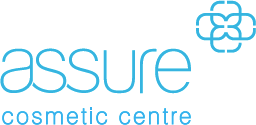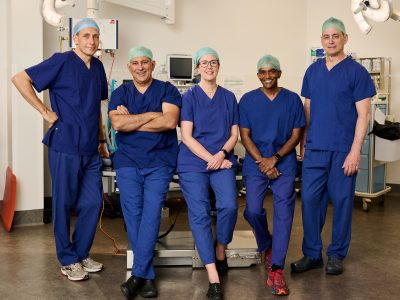A facelift is a cosmetic surgery procedure aimed at reducing sagging skin on the face and neck while targeting visible signs of ageing, such as addressing facial tone through the surgical tightening of underlying muscles. Moreover, excess fat may be repositioned or removed as part of the process.
Facelift in Perth
The face is usually the first place to reveal the effects of time, sun damage and everyday life. The elasticity of our skin also naturally changes as we get older, resulting in a change in our appearance.
Facelift surgery in Perth is commonly performed on individuals whose ages range from 40 to 65, though it is also an option for older individuals to consider.
Please note, facelift surgery outcomes may vary based on individual anatomical and biological differences between genders. Male and female faces have distinct characteristics, such as variations in skin thickness and facial muscle mass. These factors can pose unique challenges when performing facelift surgery on men and may require additional expertise to achieve desired results. At our practice, we only provide facelift surgery for females, as our team’s experience and techniques are tailored to address the specific needs of female patients. We do not offer facelift surgery for males.
Book a Consultation
To find out if a facelift in Perth is right for you, the first step is to book a consultation with your Specialist Plastic Surgeon. They will discuss your expectations and any concerns you may have. Pricing and post-operative care will also be discussed.
At Assure Cosmetic Centre, you’re in the care of a highly skilled medical team. Through your journey with us you will feel informed and comfortable and able to make the decision that is best for you.
Frequently Asked Questions
Facelift
The primary goal of a facelift procedure is to reduce the apparent signs of ageing and achieve a smoother appearance for the face and skin. Furthermore, it is possible to combine a facelift with other surgical procedures like a browlift or eyelid surgery.
In conjunction with facelift surgery, non-surgical cosmetic treatments such as chemical skin peels, dermabrasion, or skin resurfacing may also be performed.
Your Specialist Plastic Surgeon at Assure Cosmetic Centre is the best person to determine if your expectations are achievable.
The surgical technique used for a facelift procedure depends on your physical features and your Specialist Plastic Surgeon’s method. Usually, an incision is made commencing in the hairline at the temple, extending in a skin crease down in front of the ear, around the ear lobe and then behind the ear, finishing in the hairline of the scalp. This allows skin to be separated from the underlying fat and muscle. The skin is then stretched upwards and backwards, and excess skin removed. In some cases, additional procedures such as removal of fat under the chin and tightening of underlying muscles is performed. The procedure usually takes at least 4 hours, depending on the extent of surgery involved.
Depending on the desired effect, a facelift may be performed on its own or in combination with other cosmetic surgery during the same operation.
In Perth, facelift surgery is performed in an accredited hospital under general anaesthetic. An overnight stay in hospital is the norm, but this may be longer depending on your general health, the extent of the procedure and your surgeon’s advice.
A compression garment is placed around the ear, cheeks and neck after surgery for 1-2 weeks and ice packs are applied on the ward. Sutures are removed within the first week after surgery.
Bruising and swelling may take up to 2 weeks to settle, so it is recommended to take this downtime into account when planning your work or social calendar.
You will need to attend a post-operative consultation approximately 5-7 days after facelift surgery, and again 7-14 days after surgery with subsequent post-op visits if required.
All plastic, cosmetic and reconstructive surgical procedures come with risks and potential complications. To ensure successful surgery, it is crucial to understand and minimise these risks. Whilst all measures are taken to mitigate risks, some risks are unavoidable.
All information on this page is general in nature – your Specialist Plastic Surgeon will discuss the specific risks and complications pertinent to your individual surgical procedure during your consultation. General risks for surgery are listed here.
Specific risks related to facelift surgery include, but are not limited to:
- Temporary or Permanent Hair Loss: There is a possibility of experiencing temporary hair loss around the scars. While this is typically temporary, in rare cases, it may become permanent.
- Skin Loss and Skin Grafting: Impaired blood supply can lead to skin loss, which might require a skin grafting procedure.
- Bruising and Swelling: Following the surgery, it is common to experience bruising and swelling. These effects are typically temporary and will subside over time.
- Temporary Numbness: Numbness around the operated sites is a common occurrence. Fortunately, in most cases, this is temporary and will gradually improve over several months.
- Earlobe Deformity: There is a slight risk of earlobe deformity as a result of the procedure.
- Facial Nerve Damage: Approximately one in every hundred patients may experience damage to the facial nerve. This can lead to partial loss of movement and a “lopsided” appearance of the face. While this damage is usually temporary, in rare cases, it may be permanent.
- Differences in Facial Appearance: It is possible to observe a slight difference in appearance between the right and left sides of the face after the surgery.
- Revisional Surgery: In some instances, complications may arise that require revisional surgery to correct.
While your surgeon will take great care to minimise their visibility, it’s important to understand that scars are an unavoidable outcome of any surgical procedure. Following a facelift, the scars are generally concealed by hair and the natural facial creases, though they might become noticeable if you have short hair or pull your hair back. If you have a history of keloid or hypertrophic scarring, it’s essential to inform your surgeon about this tendency before the procedure.
As with any surgery, there are complications that may occur as a result of a facelift. However, in the vast majority of cases, the surgery and the recovery are uneventful. Complication rates are higher with associated medical conditions such as diabetes, increasing age and organ dysfunction. Smoking around the time of surgery will also lead to a marked increase in wound-related problems.
Bruising and swelling may take up to 2 weeks to settle, so it is recommended to take this downtime into account when planning your work or social calendar. Some patients feel tightness or numbness in their face and neck. These feelings may persist for a number of months, but will subside.
Your Specialist Plastic Surgeon will discuss what you can expect from this procedure. It is important to carefully follow your Specialist Plastic Surgeon’s advice to reduce the risk of complications.
Depending on the extent of your procedure, it might be necessary to take 2-3 weeks off work to rest. It is recommended to avoid heavy lifting, intense exercise, swimming, and strenuous sports for up to six weeks following the procedure or until your surgeon advises otherwise.
After 7-10 days, you can apply normal makeup, but it’s crucial to protect your skin from the sun. Make sure to follow proper sun protection measures to maintain your skin’s health.
Some bruising and swelling are normal and may take a few weeks to subside. Elevating your head while sleeping will aid in reducing the swelling. It’s typical to feel tightness and numbness in the face and neck area, which might last for several months. Your surgeon may suggest wearing post-surgical compression garments to reduce swelling and support the healing process.
It’s essential to highlight that each patient’s recovery process requires sufficient time, support, and proper postoperative care. Healing abilities and pain tolerance may vary among individuals, resulting in differences in recovery duration and the ability to engage in various activities.
An initial consultation with your Specialist Plastic Surgeon will cost approximately $250, which is payable in full at the time of booking your consultation. Your consultation will take approximately 30-60 minutes.
Your Specialist Plastic Surgeon will provide an indication of the likely costs, such as your surgeon’s fee, anaesthetist’s fees and hospital and theatre fees. Your surgeon’s fee includes all post-operative care and nurse dressings. Pricing will vary from case to case, but an indicative range of your surgeon’s fee is $6,500 to $10,000 excluding GST and in most cases is combined with a necklift. Anaesthetist, hospital and theatre fees are additional.
A good starting point is to book a consultation with one of our experienced Specialist Plastic Surgeons at Assure Cosmetic Centre. You will have the opportunity to discuss your concerns and ask questions. You will be provided with detailed information regarding the treatments or procedures that can help you, the expected outcomes, and the costs involved. Click here to make an appointment.
The Australian Society of Plastic Surgeons (ASPS) website is a helpful and reliable source of information online. Their website is an excellent place to research a range of surgical procedures and non-surgical treatments, and view video animations.
Utilising a search engine can also be beneficial in finding relevant information on these topics.
For patients seeking breast augmentation, the Therapeutic Goods Administration (TGA) breast implant hub also has several documents regarding breast implants, covering various subjects such as Breast Implant Associated-Anaplastic Large Cell Lymphoma (BIA-ALCL), consumer inquiries, and related matters.


